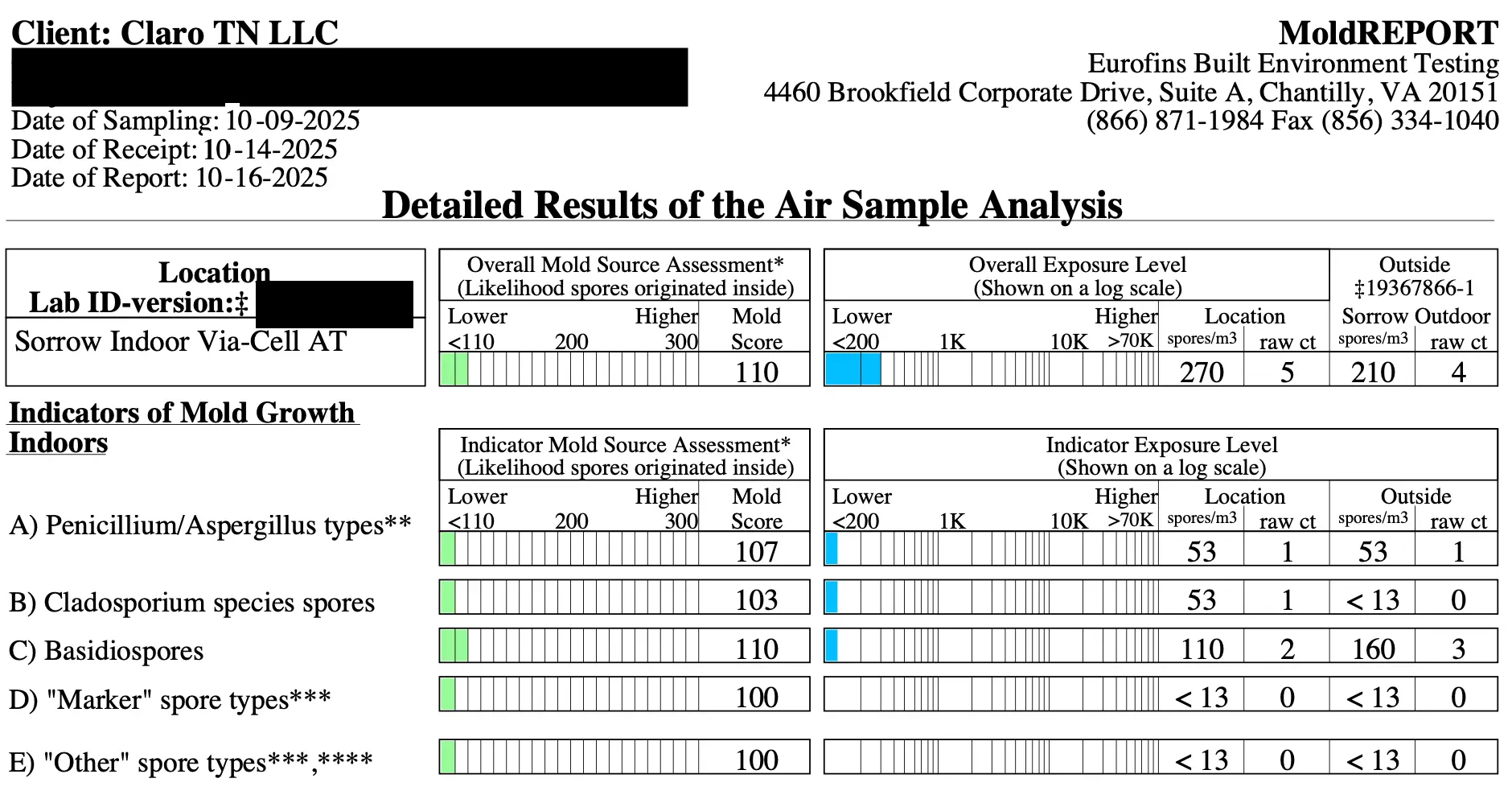
A Huntleigh homeowner contacted us after months of struggling with concentration problems, memory lapses, and persistent mental fatigue. Simple tasks like reading, following conversations, or remembering appointments had become unexpectedly difficult. Her doctor suggested environmental factors might be contributing to her cognitive decline, and recommended testing her home for mold contamination.

When we inspected the home, there were no obvious signs of water damage or visible mold growth. But air quality testing revealed severe contamination that had been silently affecting her health for months. The results were alarming: her home showed a mold score of 300—one of the highest levels we've recorded. Total indoor spore counts reached 30 times higher than outdoor levels, with dangerous concentrations of multiple mold species including Penicillium, Aspergillus, and Cladosporium. These elevated mold levels were creating a constant inflammatory response in her body, directly impacting brain function, mental clarity, and cognitive processing.

We performed our whole-home dry fog treatment to eliminate the contamination at its source. The EPA-certified process penetrated every surface and airspace, neutralizing mold spores throughout the property.
Post-treatment testing confirmed dramatic results: her mold score dropped from 300 to 110, and total spore counts returned to normal levels—matching outdoor air quality. All dangerous mold species were reduced to safe ranges.
Within days of treatment, she reported noticeable improvements. Her mental clarity returned, concentration improved significantly, and the persistent brain fog that had plagued her for months finally lifted. She could read books again, focus on work tasks, and felt like herself for the first time in nearly a year.
This case demonstrates how hidden mold contamination can severely impact cognitive function—and how quickly symptoms can improve once the source is properly addressed.